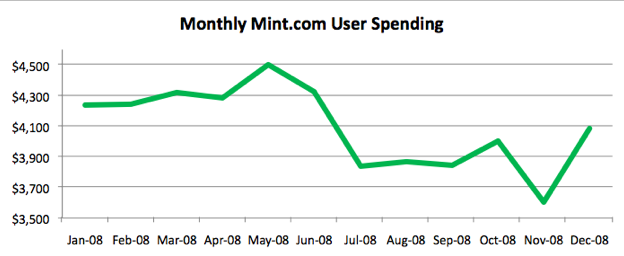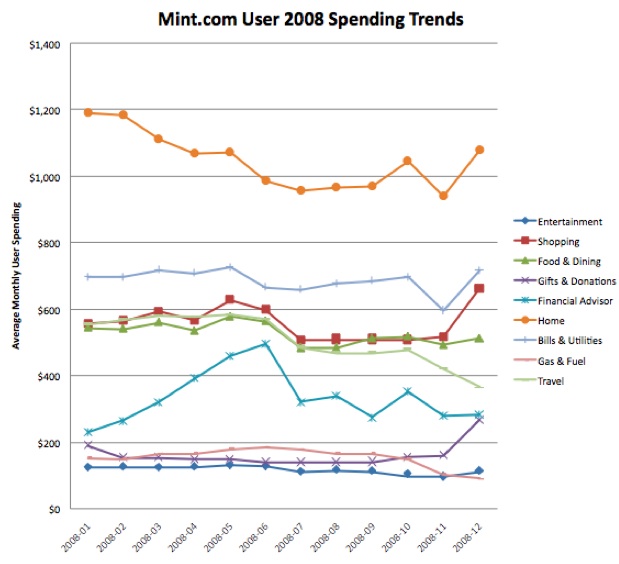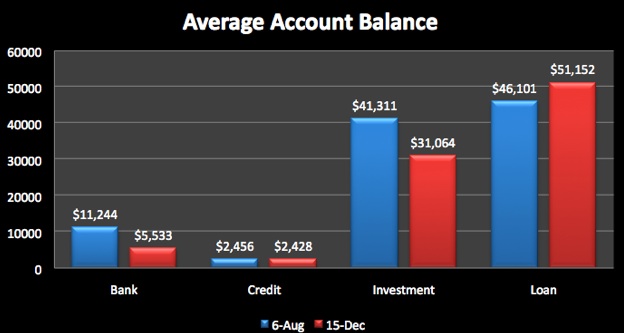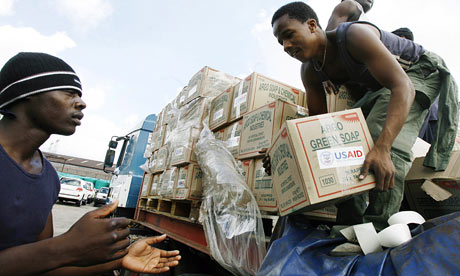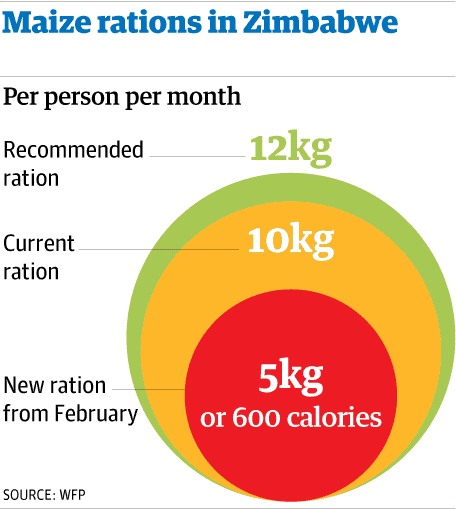Paul Havard talks on his cell phone inside a Citibank branch in New York on Jan. 16, 2009
Even without doing the math, you probably get that the government's financial-rescue effort is failing. The signs are hard to miss. Your friend in finance got pink-slipped. A house sale down the street fell through because the buyer couldn't get a mortgage. A local bank is closing a nearby branch or maybe shutting down altogether.
But do the math, and you can begin to understand how really botched this bailout has been. Since October, the government has deposited $165 billion into the accounts of the nation's eight largest banks. Yet those same financial firms are now worth $418 billion less than they were four months ago, and the Congressional Budget Office estimates that the government's preferred shares are worth at least $20 billion less. In Wall Street terms, that's throwing good money after bad. All told, the government's annualized rate of return on its investment in the nation's largest banks is -1,096%. That's well beyond Bernie Madoff territory; he topped out at a mere -100%. (See pictures of the demise of Bernie Madoff.)
So how could $438 billion — $418 billion of their money and $20 billion of ours — go poof, just like that? Here's the easiest explanation: our banking system has sprung a leak.
Financial firms are built on capital. They take in a dollar, borrow against it and then lend out $3, $4 or $9. Or $30. In the past few years, executives have been using thinner and thinner capital — acquisitions and questionable off-balance-sheet arrangements — to build their money pails. In good times, the more of those cheap sources of capital you use, the more profitable your bank will be.
For the past few decades, banks have been piling up risk, making more and more loans based on less and less capital. Years of economic growth, shallow recessions and record-low default rates lulled bankers into thinking that the future would resemble the immediate past, at least as far as risk went. Turns out it didn't. All it was going to take was a worse-than-average recession — and it looks as though we've got one — and many banks, including a number of the biggest ones, were bound to fail. The shockingly poor lending standards — housekeepers being approved for million-dollar mortgages — have only hastened their demise. "This crisis needs to be understood as something that has developed over the past decade," says Joseph Mason, a finance professor at Louisiana State University's E.J. Ourso College of Business. "This isn't just one black swan. It's a bunch of black swans that have hung out for a while and created a giant problem." (Read George W. Bush's top 10 economic mistakes.)
There's little hope that the type of shares the government is buying in banks as part of the Troubled Asset Relief Program (TARP) will plug the hole in the banking system's bucket. Paul Miller, an analyst at FBR Capital Markets who has written a number of reports on the capital issues of banks, says the only way to solve the problem is for the government to stop buying preferred shares and start taking direct ownership stakes. Of course, the issue with that approach is that the problem at the banks is so large, Uncle Sam may end up owning a good portion of the banking sector. Few seem to want nationalization. Unfortunately, that could be the only way out.
Playing with House Money
To understand why nationalization may be inevitable, you have to get a handle on the true source of the banks' problems. The banking business — at least the way George Bailey practiced it in It's a Wonderful Life — was all about deposits and loans. You take in deposits, on which you pay a relatively low interest rate, say 2%. Then you lend that money to other people at a higher interest rate, say 7%. Pocket the difference. Repeat. But starting in the early 1970s, banks began funding less of their lending with old-fashioned deposits. Bank deposits backed 90% of all loans four decades ago; today they back 60%. Where does the rest of the loan money come from? From the bank's past earnings and the money given to it by its investors. Using the house's money has generated higher profits — with significantly higher risks.
Regulators have long had a lower capital requirement on loans that are not backed by deposits. But in 2004, the Securities and Exchange Commission (SEC) removed rules that capped leverage at 15 to 1 for investment-banking firms like Goldman Sachs. That allowed the firms to vastly expand their lending activities without raising a single new dollar of capital. One big backer of the rule change was reportedly former Treasury Secretary Henry Paulson, who was then Goldman's CEO. By that time, the regulatory separation between investment banks and traditional banks had long since been removed, so traditional banks such as Citigroup and Bank of America shifted more and more of their lending operations to their investment-banking divisions, and leverage took off. By the end of 2007, many banks were lending $30 for every dollar they had in the vault. "Changing the net-capital rule was an unfortunate misjudgment by the SEC," says former SEC official Lee Pickard. "It's one of the leading contributors to the current financial crisis." (See who else is to blame.)
Another way banks sought to boost their profits — at least those available to shareholders — was through stock buybacks. Investors cheer buybacks, because they shrink the number of outstanding shares, boosting a company's profits per share and usually its stock price. But corporate stock purchases also decrease banks' capital, because their earnings are used to purchase shares rather than being retained as cash. Worse, sometimes banks borrow money in order to buy back shares, upping their leverage and lowering their capital at the same time. In the past four years alone, the nation's largest banks, as defined by Standard & Poor's, have spent $300 billion buying back stock.
One of the firms leading the charge to capital-light banking was Bank of America (BofA). Starting in 1993, a predecessor firm became one of the first banks to develop and embrace computer models that were supposed to improve a bank's ability to determine the risk of a particular type of loan. After a merger in 1998 that formed the bank, BofA officials often argued to investors and regulators that these new advanced risk controls meant the bank needed to carry less capital per loan. The officials also frequently fought regulations that would boost capital requirements for them and other banks. In 1998, BofA asserted that tying capital requirements to credit ratings, which would have required banks to hold more funds in the vault to account for the riskiness of subprime loans, was silly.
And to the delight of investors, BofA was pushing for the freedom to make risky loans at the same time it was aggressively repurchasing shares. Since 1998, it has spent $62 billion on share buybacks, according to S&P. The result is that over the past decade, BofA's tangible-capital ratio — the amount of tangible equity in relation to tangible assets — has nearly halved from 5% in 1998 to 2.8% in the third quarter of 2008. It became a bank built on air. (See pictures of scared traders.)
But BofA wasn't alone. By early 2008, nearly all the big banks were poorly positioned to weather a downturn — particularly this downturn. Accounting rules demand that banks take a hit to their earnings by the value of a loan when it becomes clear a borrower is not going to pay it back. When a bank's loan losses are greater than its income, it has to take money from its shareholders' equity account to make up the difference. That's a big deal for a company's investors. If shareholders' equity is wiped out, their stock is effectively worthless. So investors watch this account intensely; if they think shareholders' equity is headed to zero, so too is a bank's stock.
FBR's Miller looked at eight of the largest financial firms in the U.S. and determined that on average, if just 3.4% of their loans go unpaid, their shareholders will be wiped out. The good news is that these firms are so large that 3% of their loan portfolio is a really big number: some $400 billion. The timing of when the loans go bad matters too. If, say, 5% of a bank's loans go bad over 10 years, the bank will survive. It can cover the loan losses with the earnings it gets from all its paying customers. But given the way banks capitalize themselves these days, if 5% of a bank's loan portfolio goes bad in a single year, the bank is toast.
The switch to doing more lending through investment-banking operations has only made matters worse. For deposit-based loans, the banks have wide discretion as to when they record a loss. Some do it after a borrower misses his first payment. Other banks wait until the loan is 120 days past due. But for loans made through a firm's investment-banking division, the bank has to reduce the value of those debts according to what similar pools of loans are worth. This is known as mark-to-market accounting. And when investors grow increasingly nervous that borrowers will not pay back their debts, as they are now, the bonds on which those loans are based plummet in value, even before payments stop coming in. As a result, banks are watching their capital bases erode much faster than their executives ever expected — and probably faster than they can handle.
Building a Better Bailout
TARP does nothing to patch the hole in the banking system. And it certainly doesn't do anything to encourage banks to make more loans. Yes, banks have gotten nearly $300 billion in money from the government, and that's a lot of dough. But it's not free dough. In return for federal cash, the government has taken preferred-stock shares as the firm's markers. Unlike common stock, which is the kind you or I would buy from a broker, preferreds have to eventually be paid back, so they are really loans, not additional capital. (See which country has the best bailout plans.)
Say a bank has $5 in capital and $100 in loans. Now the government gives the bank an additional $100 in preferred shares and says, "Go make more loans." Well, the bank might then have $200 in loans, but it still has only $5 in common shareholders' equity. The result: if just 2.5% of its loans go bad, the bank's shareholders are wiped out. Wisely, the largest banks in the nation lent less in the fourth quarter of 2008 than in the previous three months — a strategy that has drawn some complaints. But that hasn't removed the pressure on their shares. That's because the banks have had to continue to take loan losses. And banks don't have the option to pass those losses off on the new money they got from the government. They have to write down their common stockholders' equity first. And as that capital falls, so go the bank's shares. Some are alarmingly close to zero.
No bank's stock has fallen more in value during the past four months than Bank of America's. The combined value of its shares is now $37 billion. That's $123 billion less than they were worth at the end of September. In the third quarter, BofA was forced to write down $4.4 billion in loans, or about 1.8% of its loan portfolio. Compared with what some of its competitors wrote down, that wasn't a heck of a lot; Citigroup, for instance, had a $13.2 billion charge in the same quarter, primarily related to loan losses. But the relatively small loss took BofA's thin tangible equity, the type of capital that matters most to shareholders, down to a ratio of just 2.6% of loans, according to FBR. By that measure, Bofa was a weaker bank than any of its rivals, including Citigroup. But since the market was so focused on bad loans and the charge-offs banks had to take, no one seemed to notice BofA's faults.
That is, until the fourth quarter. In mid-September 2008, in a deal pushed by regulators, BofA agreed to buy Merrill Lynch. The acquisition actually boosted BofA's capital ratios, but it also added losses to an already fragile capital structure; Merrill Lynch lost $15 billion in the fourth quarter alone. Knowledge of the impending losses forced BofA CEO Ken Lewis to ask the government for an additional $20 billion in TARP funds — on top of the $25 billion it had already received — as well as about $100 billion in loan guarantees. Without the government assistance, BofA says, it couldn't have closed the merger.
The Merrill losses, which weren't publicly revealed until early January, have angered shareholders, some of whom have sued the company for not informing them sooner. And last week, the losses also led Lewis to ask Merrill's top executive, John Thain, to resign for failing to keep BofA officials apprised of his firm's bottom-line problems. Thain says Lewis knew all along. (See pictures of TIME's Wall Street covers.)
Cleaning Up the Mess
Nouriel Roubini, the New York University economics professor who was famously early in predicting that the end of the housing boom would cause a financial crisis, estimates that continued loan losses will force U.S. banks to come up with an additional $1.4 trillion just to stave off bankruptcy. And since the banks aren't likely to earn much money or attract new investors anytime soon, much of the money will have to come from the government.
Regulators are split on what to do next. The Federal Deposit Insurance Corporation is backing a plan to create what it calls an aggregator bank, which would buy up the loans of BofA, Citigroup and the rest of our now troubled system, theoretically putting an end to the escalating losses eating away at the banks' capital. But if the government buys those assets at current market rates, banks would be forced to take immediate losses on the sales, doing more harm than if the government just left the troubled loans where they are. Sources say the Federal Reserve would prefer to let the banks keep the loans and troubled bonds for now and instead provide the banks with insurance policies guaranteeing that the government will swallow a good deal of future credit losses. But a similar deal that the Fed struck with Citi did little to boost that company's stock or stave off fears that it may soon go under.
That's why a small but growing number of people are starting to talk about nationalization. Speaker of the House Nancy Pelosi recently said nationalization, or something close to it, is a better solution than just buying bad assets, because if the government takeovers succeed, then taxpayers get to keep the profits when they eventually resell the banks. But if the government doesn't turn a nationalized bank around, it could be very costly to taxpayers.
No matter what happens, things have definitely changed for Lewis and other former titans of the banking business. A few months ago, BofA's CEO was hailed for running a bank so prosperous that it was able to swallow mortgage lender Countrywide Financial and investment bank Merrill Lynch in the depths of the worst banking crisis in recent history. The trade magazine American Banker named Lewis Banker of the Year in December. Now he's fighting to keep his job. And even if he succeeds, he's got a new partner. The government already has a large stake in his bank, with its $45 billion in preferred shares. The government's ownership could dramatically rise if the Fed starts buying common shares of BofA, which would mean that Washington would be calling more of the shots. Increasingly, the only shareholder that matters to Bank of America and other banks is Uncle Sam. Without the government, the math of the banking business these days just doesn't add up.
Original here







